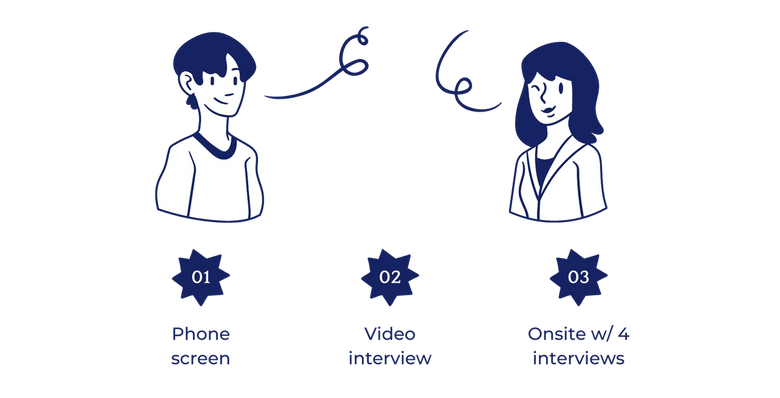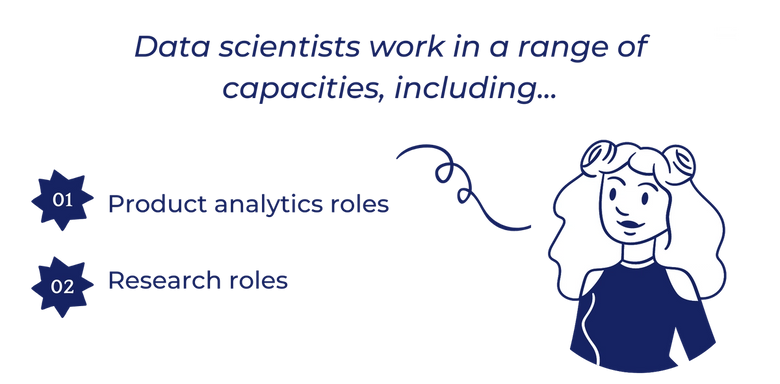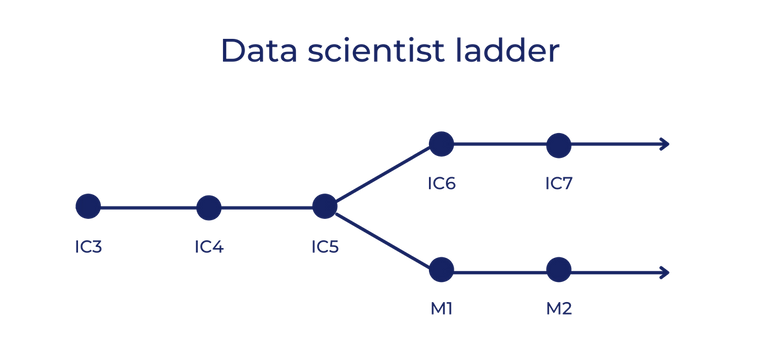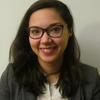Guide to the Facebook Data Scientist Role
Your guide to landing a data science role at Facebook — covering everything you should know before applying, and a look into the interview process, and more.
The data science role at Facebook is an enviable one. Data professionals not only have the chance to utilize one of the world’s largest datasets and do work that impacts the social media network’s roughly 2.89 billion monthly active users; they also earn approximately 23% more than the national average salary for a data scientist in the US.
Before we get into it...
80% of hiring at Facebook is through sourcing or referrals, so if you want to get in, reaching out to your network is your best bet. Leverage your immediate network and second degree connections to score a referral. It doesn't matter who refers you for the role.
This article will be broken down into 5 parts:
- What to know before applying
- Creating a winning resume
- The 3 stages of the interview process
- What the job is like
- What promotions look like
What to know before applying

The data science role at Facebook combines strong analytical and technical skills with sharp product sense.
The day-to-day responsibilities of a Facebook data scientist
Roles and responsibilities vary greatly depending on which team you join; however, we compiled some of the more generalized responsibilities from a range of active data science job descriptions at Facebook to give you a general idea of what to expect.
- Take advantage of massive amounts of structured data to understand how our customers interact with our product and service offerings
- Lead the design, analysis, and interpretation of projects from data requirement gathering to data processing, modeling, and recommendations
- Partner with cross-functional teams to identify new opportunities requiring the use of modern analytical and modeling techniques
- Effectively communicate insights and recommendations to business leads and influence strategic decision-making
- Build partnerships with other teams in order to scale analytical approaches and frameworks across similar efforts in the company
- Understand the complex problems that users and businesses face and identify opportunities to address them
Typical salary for a data scientist at Facebook
Promotions and bonus compensation are strictly tied to how well you do in your performance review. Salaries are determined by a formula based on job category, experience level, and location--leaving little room for negotiation.
Following are the average salaries for data scientists at Facebook in the Bay Area:
- IC3: $172k TC per year for the first 4 years
- IC4: $219k TC per year for the first 4 years
- IC5: $328k TC per year for the first 4 years
- IC6: $457k TC per year for the first 4 years
The above data is taken from our offer review community. The data updates in real-time as new offers are added. To see the range of salary data, and to get specific data to your location, visit our community.
Employee benefits at Facebook
- Medical, dental, and vision insurance for you and your family (includes programs that help with autism treatment, cancer care, and transgender services).
- 4 months paid parental leave after a child’s birth or adoption
- $4000 in “baby cash” plus financial assistance for egg-freezing and adoption fees
- Competitive retirement plan (401k with a 50% match on participant contributions of up to 7% of total compensation)
- Generous paid time off (21 days) plus a 30-day paid break every 5 years
Creating a winning resume

Since your resume is what gets you noticed by a recruiter, you want to make sure you do it right. In doing so, you must keep in mind that recruiters are only going to look at your resume briefly — probably not more than 30 seconds.
Let's talk length
You've probably heard that your resume shouldn't be longer than 1 page long; this advice still holds true. If you have more than 10 years of relevant job experience, then adding a second page is generally okay, but if you have less than this, you shouldn't exceed a page.
The idea is twofold:
- Recruiters likely don't have time to look at more than 1 page, and if you don't wow them on the first page, they're not going to continue onto the second. What if some of your most impressive experience is on the second page? Hence, you should prioritize your most important information into 1 page.
- 1 page should be enough space — if it's not, you're probably including things that you shouldn't and/or not formatting properly (consider removing the summary section, making your header smaller, and changing font size and line spacing).
👉 Want help with formatting your resume? Read next: Which resume outline should you use?
What to include
There are typically 4 sections you should include:
- Education: Note your school, major, graduation year, and GPA. You can also include some relevant coursework (especially if you're entry level).
- Professional experience: This is the meat of your resume, and you should highlight your most relevant and impressive experience. Generally speaking, it's a good idea to explain each role in 3 bullet points: (1) highlight what you did, (2) get technical with the tools and programming languages you used, (3) describe what impact your work had. You should also use concrete data and incorporate keywords from the job description whenever possible.
- Projects: This is where you get to show off any side projects that you've done. It's a great section to show what you're passionate about as well as your teamwork, leadership, communication skills. However, don't get carried away here — only feature your most relevant projects.
- Skills: It's likely you'll need to know a data querying language (specifically SQL) and at least one programming language (like Python, R, Java, or C++). Additional skills will greatly depend on which data science role you're applying to. For example, if you're applying for a role with a machine learning focus, you'll need experience with libraries and packages such as PyTorch, Caffe2, TensorFlow, Keras, or Theano.
👉 Another helpful resource: How far back should your resume go? Strategies for every career stage
The 3 stages of the interview process

Data science interviews at Facebook are challenging. The emphasis on product-specific questions means you should familiarize yourself with some of the business problems Facebook data scientists solve on a daily basis.
Topics you can expect to cover include algorithms, coding (nearly 50% of all questions in the interview), product, statistics, system design, modeling, probability, and business case studies.
1. Phone screen
The first step is a phone screen with an HR recruiter. However, be prepared to answer more than just the typical getting-to-know-you questions about your resume. Don’t be surprised if you hear questions about SQL and product analysis.
2. Video interview
It's 45 minutes long and consists of product analysis and technical questions.
Product analysis questions
These are product-specific questions related to the role you applied for. Case study questions test your product sense and ability to create solutions to business problems.
Expect questions about experimentation (eg: how would you roll out ‘X’ feature and how would you measure its success?) and what metrics you would use as key performance indicators.
- “How would you determine which Facebook users are best friends?”
- “Daily active users on News Feed are down. How would you investigate?”
- “How would you improve Facebook’s ‘Friends You May Know’ feature?”
- “What kinds of features would you add to Instagram?”
- “If 70% of Facebook users on iOS use Instagram, compared with just 35% of Android users, how would you investigate the discrepancy?”
- “What metrics would you use for an A/B test of product XYZ?”
- “What’s your favorite Facebook product and how can we improve it?”
- “How would you define ‘meaningful social interaction’?”
Technical questions
During the technical screen, you will be judged on your approach to solving problems, your ability to articulate and prescribe solutions, and justify your reasoning.
You’ll be given a series of business case questions and tasked with finding a solution using Python, SQL, and other quantitative analysis tools.
- “How would you create a model to find bad sellers on Facebook Marketplace?”
- “Say we introduced a new system which identified and banned accounts that posted ads for prohibited content. How would you determine if it was working?”
- “How would you build a model to decide what to show a user and how would you evaluate its success?”
- “How would you use data to confirm that a user’s personal information is real?”
- “What is the impact of parents joining Facebook? How would you measure it?”
3. Onsite interviews
The final round in the hiring process consists of four interviews lasting 30 minutes each. You’ll revisit some of the topics you covered during the screening process but in greater detail.
According to Facebook’s Onsite Interview Guide, compiled by recruiters and data scientists at Facebook:
“Throughout your discussions during the day, your interviewers will be assessing your ability to tell a compelling story with data, make data-driven decisions, and impact change through product development and optimization.”
1. Analysis case: Product integration
You’ll be presented with a product case study focused on interpreting user behavior using data and metrics. Product interpretation questions test your ability to translate users’ behavioral data into product ideas and insights.
Expect open-ended questions such as: “How would you evaluate YouTube’s video recommendations?”
You will be expected to:
- Understand hypotheses for launching new features
- Consider and quantify tradeoffs of a feature in terms of metrics
- Design experiments to test these hypotheses
- Interpret the results of the experiments
- Communicate your decision via metrics
The data science job at Facebook, unlike other tech companies, has a broad scope. Many job seekers assume this interview is just about jamming on some SQL/python, but it's not. The case study will really test your ability to think about the business and answer questions about how a feature or metric can affect the user experience. You will also get related questions around trade-offs and how they may affect revenue or engagement.
2. Analysis case: Applied data
This interview focuses more on the technical side of solving a problem using data.
Technical questions will focus on solving a problem, using a dataset Facebook will provide during the interview. This will often include data pertaining to Facebook products, so it really helps to understand those ahead of the interview. Specifically, think through how the products came to be, what decisions were made along the way, and what metrics matter.
You’ll be given a more specific product-related problem and asked to do the following:
- Consider what datasets are best suited to answer the question
- Draw inferences from the dataset
- Combine multiple signals into a data-informed statement
- Map analytical insights back to product impact
Sample questions:
- Facebook is rolling out a new feature called ‘Mentions,’ which is an app specifically for celebrities on Facebook to connect with their fans. How would you measure the health of the Mentions app?
- A Facebook Groups product manager decides to add threading to comments on group posts. Comments per user increase by 10% but posts go down 2%. Why would that be? What metrics would prove your hypotheses?
- Facebook composer, the posting tool, drops from 3% posts per user last month to 2.5% posts per user today. How would you investigate what happened?
3. Quantitative analysis
While this section won’t cover advanced stats and math concepts, you’ll need to use basic stats to evaluate quantitative reasoning and applied statistics. Your interviewer will be assessing your knowledge of relevant mathematical, probabilistic, and statistical concepts and how they relate to Facebook products.
Sample questions:
- What do you think the distribution of time spent per day on Facebook looks like? What metrics would you use to describe that distribution?
- How would you test whether having more friends now increases the probability that a Facebook member is still an active user after 6 months?
4. Technical analysis
The final round involves a coding interview where you’ll illustrate your solution on a whiteboard or online equivalent. Your interviewer will be assessing your ability to talk through the intention of your code and the logic behind it. The questions will challenge you to analyze open-ended product problems with code.
Prepare to field questions on data structures, algorithms, and writing SQL queries.
What happens after the onsite?
Here's the evaluation process after your interview:
- Each of your interviewers will provide a rating and a yes/no recommendation of whether or not they think you should be hired.
- The recruiter then compiles your hiring packet and will present your case at the next candidate review meeting, which is where all successful candidates are reviewed.
- At the end of the meeting, a hire/no hire recommendation is made for consideration by the hiring committee, which includes senior leaders across Facebook.
The hiring committee generally sides with the recommendations made during a candidate review meeting, so the last step of the process is a mere formality.
What's the job like as a data scientist?

Given that Facebook is a mammoth company--the social network had 58,604 full-time employees as of December 2020--data scientists work in a range of capacities, including engineering, research, and data analytics (product focus).
Product analytics roles
Product-focused roles at Facebook involve using data analysis techniques to understand customer profiles and test new features.
Data scientists who work on Whatsapp, Oculus, Messenger, or Instagram:
- Perform data analysis on the behaviors of Facebook users
- Identify business problems and possible solutions
- Help the company reach business goals around user engagement, revenue, and social reach.
For example, they’ll use data insights to assess how users are responding to a new notification feature on Facebook or analyze usage metrics on Whatsapp to create geotargeted ads. Some data scientists also work with user segments, such as small business owners. Data scientists in the Small Business Group help small businesses connect with customers on Facebook and promote their businesses through solutions like pages, advertising, and offers.
Research roles
Core Data Science is an R&D team that works to improve Facebook’s product, infrastructure, and processes. This interdisciplinary team employs people with expertise in computer science, machine learning, and statistics, as well as economics, political science, and sociology.
For example, data scientists created a data visualization that shows the reach of Facebook friends across European cities, which goes to show how small the world really is. Engineering-focused projects use AI and machine learning to improve the user experience on Facebook products. In 2017, data scientists created the Automatic Alt-Text (AAT) tool, which enables screen readers to recognize the contents of most images in News Feed.
What do employees think?
One Facebook data scientist reports:
"I really enjoy working with the people at Facebook. Their work ethic is awesome, and everyone is self-driven. There is a lot of trust and autonomy; it is entirely up to me how I plan my day to meet my project goals. It could be a bit daunting at times, but there is a great support system at the company."
Employees on Glassdoor echo this positive review, giving the Facebook Data Scientist role an average of 4.3 out of 5 stars. Positive reviews indicate good pay and benefits, a lot of support from peers, and interesting work with a lot of autonomy. Bad reviews, unsurprisingly, bring up the poor work-life balance that is quite often associated with working at Facebook.
Employees tend to attribute the poor work-life balance to working in a competitive environment where the expectations from the people around you are high. Facebook is also known for having a quick promotion trajectory, and many are willing to let their WLB suffer to move up the ladder quickly. And as with most roles at Facebook, your WLB also heavily depends on which team you join.
Generally speaking, if you don't care about being promoted as quickly, you can have a better work-life balance. But if progression is important to you, employees report sometimes working over 60 hours per week as a data scientist.
What do promotions look like?

If you get a data scientist role at Facebook, you will likely start out as an individual contributor (IC) somewhere in the IC3-IC5 range.
Compared to other tech giants, Facebook's promotion trajectory is fairly quick. If you start out at IC3, you can expect to move up to IC5 within a few years if you meet the expectations. Moving above IC5, however, is much harder and most data scientists at Facebook do not get promoted to IC6+.
If you are able to move above IC5, you'll have 2 possible tracks:
- Remain as an individual contributor: If you stay on this path and are promoted to IC6, you can continue moving up the IC ladder.
- Transition into people management: You can also choose to get started in management and move to M1. From there, the path is to move to M2 and then D1.
Facebook's performance reviews currently happen twice a year, but beginning in 2022, they will happen once a year. A stack ranking system is used where managers grade their employees on a bell curve. Then, employees complete a self-assessment and get peer feedback in order to receive their final performance grade.
👉 Read next: Behind Performance Reviews + Bonuses at Facebook
The information provided herein is for general informational purposes only and is not intended to provide tax, legal, or investment advice and should not be construed as an offer to sell, a solicitation of an offer to buy, or a recommendation of any security by Candor, its employees and affiliates, or any third-party. Any expressions of opinion or assumptions are for illustrative purposes only and are subject to change without notice. Past performance is not a guarantee of future results and the opinions presented herein should not be viewed as an indicator of future performance. Investing in securities involves risk. Loss of principal is possible.
Third-party data has been obtained from sources we believe to be reliable; however, its accuracy, completeness, or reliability cannot be guaranteed. Candor does not receive compensation to promote or discuss any particular Company; however, Candor, its employees and affiliates, and/or its clients may hold positions in securities of the Companies discussed.
